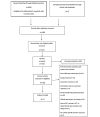Mobile Health Technology Interventions for Suicide Prevention: Systematic Review
- PMID: 31939744
- PMCID: PMC6996750
- DOI: 10.2196/12516
Mobile Health Technology Interventions for Suicide Prevention: Systematic Review
Abstract
Background: Digital interventions are proposed as one way by which effective treatments for self-harm and suicidal ideation may be improved and their scalability enhanced. Mobile devices offer a potentially powerful medium to deliver evidence-based interventions with greater specificity to the individual when the intervention is needed. The recent proliferation of publicly available mobile apps designed for suicide prevention underlines the need for robust evidence to promote safe practice.
Objective: This review aimed to examine the effectiveness of currently available mobile health (mHealth) technology tools in reducing suicide-specific outcomes.
Methods: The following databases were searched: Cochrane Central Register of Controlled Trials (The Cochrane Library), MEDLINE, EMBASE, PsycINFO, and relevant sources of gray literature. All published and unpublished randomized controlled trials (RCTs), pseudo-RCTs, and pre-post observational studies that evaluated the effectiveness of mHealth technology in suicide prevention delivered via mobile computing and communication technology were included. Studies were included if they measured at least one suicide outcome variable (ie, suicidal ideation, suicidal intent, nonsuicidal self-injurious behavior, and suicidal behavior). A total of 2 review authors independently extracted data and assessed study suitability, in accordance with the Cochrane Collaboration Risk of Bias Tool, on July 31, 2018. Owing to the heterogeneity of outcomes found across studies, results were not amenable for pooled synthesis, and a meta-analysis was not performed. A narrative synthesis of the available research is presented here.
Results: A total of 7 studies met criteria for inclusion . Four published articles that reported on the effectiveness of the following mobile phone apps were included: iBobbly, Virtual Hope Box, BlueIce, and Therapeutic Evaluative Conditioning. Results demonstrated some positive impacts for individuals at elevated risk of suicide or self-harm, including reductions in depression, psychological distress, and self-harm and increases in coping self-efficacy. None of the apps evaluated demonstrated the ability to significantly decrease suicidal ideation compared with a control condition. In addition, 3 unpublished and recently completed trials also met criteria for inclusion in the review.
Conclusions: Further research is needed to evaluate the efficacy of stand-alone mHealth technology-based interventions in suicide prevention. The small number of studies reported in this review tentatively indicate that such tools may have a positive impact on suicide-specific outcomes. Future mHealth intervention evaluations would benefit from addressing the following 3 main methodological limitations : (1) heterogeneity of outcomes: a lack of standardized measurement of suicide outcomes across studies; (2) ecological validity: the tendency to exclude potential participants because of the elevated suicide risk may reduce generalizability within clinical settings; and (3) app regulation and definition: the lack of a standardized classification system for mHealth intervention type points to the need for better definition of the scope of such technologies to promote safe practice.
Trial registration: PROSPERO CRD42017072899; https://www.crd.york.ac.uk/prospero/display_record.php?RecordID=72899.
International registered report identifier (irrid): RR2-10.2196/resprot.8635.
Keywords: mHealth; systematic review.
©Ruth Melia, Kady Francis, Emma Hickey, John Bogue, Jim Duggan, Mary O'Sullivan, Karen Young. Originally published in JMIR mHealth and uHealth (http://mhealth.jmir.org), 15.01.2020.
Conflict of interest statement
Conflicts of Interest: None declared.
Figures
Similar articles
-
Mobile Health Technology Interventions for Suicide Prevention: Protocol for a Systematic Review and Meta-Analysis.JMIR Res Protoc. 2018 Jan 26;7(1):e28. doi: 10.2196/resprot.8635. JMIR Res Protoc. 2018. PMID: 29374003 Free PMC article.
-
Effectiveness of Mobile App Interventions to Improve Periodontal Health: Protocol for a Systematic Review and Meta-Analysis.JMIR Res Protoc. 2024 Jul 31;13:e50479. doi: 10.2196/50479. JMIR Res Protoc. 2024. PMID: 39083769 Free PMC article.
-
The Effectiveness of Internet-Based Self-Help Interventions to Reduce Suicidal Ideation: Protocol for a Systematic Review and Meta-Analysis.JMIR Res Protoc. 2019 Jul 29;8(7):e14174. doi: 10.2196/14174. JMIR Res Protoc. 2019. PMID: 31359868 Free PMC article.
-
Translating Suicide Safety Planning Components Into the Design of mHealth App Features: Systematic Review.JMIR Ment Health. 2024 Mar 28;11:e52763. doi: 10.2196/52763. JMIR Ment Health. 2024. PMID: 38546711 Free PMC article.
-
The Use of Mobile Technologies to Promote Physical Activity and Reduce Sedentary Behaviors in the Middle East and North Africa Region: Systematic Review and Meta-Analysis.J Med Internet Res. 2024 Mar 19;26:e53651. doi: 10.2196/53651. J Med Internet Res. 2024. PMID: 38502160 Free PMC article.
Cited by
-
Zero Self-Harm app: a mobile phone application to reduce non-suicidal self-injury-study protocol for a randomized controlled trial.Trials. 2024 Feb 10;25(1):116. doi: 10.1186/s13063-024-07932-1. Trials. 2024. PMID: 38341590 Free PMC article.
-
The Minimum Feature Set for Designing Mobile Apps to Support Bipolar Disorder-Affected Patients: Proposal of Essential Functions and Requirements.J Healthc Inform Res. 2023 Jun 6;7(2):254-276. doi: 10.1007/s41666-023-00134-5. eCollection 2023 Jun. J Healthc Inform Res. 2023. PMID: 37377634 Free PMC article.
-
Exploring the Intrinsic Association Between Perceived Social Support and Depressive Symptoms and Problematic Phone Use Among College Students Based on Network Analysis.Psychol Res Behav Manag. 2025 Apr 16;18:965-977. doi: 10.2147/PRBM.S517951. eCollection 2025. Psychol Res Behav Manag. 2025. PMID: 40256283 Free PMC article.
-
Systematic review and narrative synthesis of suicide prevention in high-schools and universities: a research agenda for evidence-based practice.BMC Public Health. 2021 Jun 10;21(1):1116. doi: 10.1186/s12889-021-11124-w. BMC Public Health. 2021. PMID: 34112141 Free PMC article.
-
Suicide in young people: screening, risk assessment, and intervention.BMJ. 2023 Apr 24;381:e070630. doi: 10.1136/bmj-2022-070630. BMJ. 2023. PMID: 37094838 Free PMC article. Review.
References
-
- World Health Organization . Public Health Action for the Prevention of Suicide: A Framework. Geneva: WHO Press; 2012.
Publication types
MeSH terms
LinkOut - more resources
Full Text Sources
Medical
Miscellaneous


